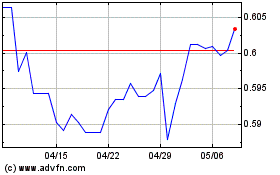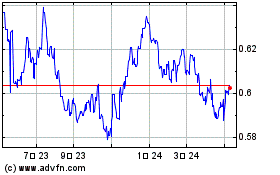U.S. Dollar Depreciates On Falling Treasury Yields
2021年10月1日 - 7:31PM
RTTF2
The U.S. dollar fell against its major counterparts in the
European session on Friday amid a fall in treasury yields, as fears
over a high inflation and a slowdown in the global economic growth
pushed up the demand for safe-haven treasuries.
The benchmark yield on the 10-year note fell 1.49 percent.
Yields move inversely to bond prices.
Chinese authorities have ordered state-owned firms to secure
adequate fuel supplies for the upcoming winter to avoid a power
crisis.
Beijing is struggling to deliver more coal to utilities as power
failure is threatening to derail growth in the world's second
largest economy.
Inflation worries continued after Eurozone inflation accelerated
for the third straight month in September.
Inflation advanced to 3.4 percent in September from 3.0 percent
in August, flash data from Eurostat showed. The rate was also above
economists' forecast of 3.3 percent.
The U.S. House of Representatives delayed a vote on $550 billion
infrastructure bill on Thursday as Democrats clashed over the size
of the plan.
Senator Joe Manchin of West Virginia insisted that he would not
support a spending package exceeding $1.5 trillion, while
progressives wanted a broader $3.5 trillion package.
Data from the Commerce Department showed that personal income
edged up slightly less than expected in the month of August.
The Commerce Department said personal spending crept up by 0.2
percent in August after jumping by 1.1 percent in July. Economists
had expected income to rise by 0.3 percent.
Meanwhile, the report said personal spending climbed by 0.8
percent in August following a revised 0.1 percent dip in July.
Spending was expected to increase by 0.6 percent compared to the
0.3 percent uptick originally reported for the previous month.
The greenback rose against its major peers in the Asian session,
except the yen.
The greenback depreciated to a 2-day low of 0.9281 against the
franc and a 3-day low of 1.3750 against the pound, from yesterday's
closing values of 0.9315 and 1.3472, respectively. The greenback is
seen finding support around 0.90 against the franc and 1.39 against
the pound.
Extending its decline, the greenback hit a 4-day low of 110.91
against the yen. The pair had closed Thursday's deals at 111.25.
Should the greenback slides further, 108.00 is possibly seen as its
next support level.
Data from the Ministry of Internal Affairs and Communications
showed that Japan jobless rate came in at a seasonally adjusted 2.8
percent in August.
That was unchanged from the July reading, although it exceeded
expectations for a rate of 2.9 percent.
The greenback reached as low as 1.1607 against the euro, down
from Thursday's close of 1.1576. Next key support for the currency
is seen around the 1.18 area.
The greenback edged down to 1.2653 against the loonie, compared
to Thursday's closing quote of 1.2676. The greenback is likely to
find support around the 1.24 level.
The greenback weakened to a 2-day low of 0.6944 against the kiwi
and a 3-day low of 0.7274 against the aussie from yesterday's
closing quotes of 0.6896 and 0.7227, respectively. The greenback
may challenge support around 0.72 against the kiwi and 0.75 against
the aussie.
NZD vs US Dollar (FX:NZDUSD)
FXチャート
から 3 2024 まで 4 2024

NZD vs US Dollar (FX:NZDUSD)
FXチャート
から 4 2023 まで 4 2024
